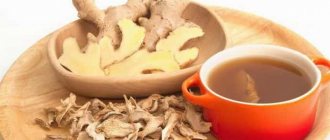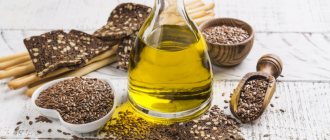If a person has a fever due to a stomach ulcer, then this condition should not be ignored. This circumstance plays an important role in the symptoms of peptic ulcer disease. Often this indicates that the patient is developing an inflammatory process, and in the case of a chronic form of the pathology, we are talking about the end of the period of remission of the disease.
In the vast majority of cases, at the initial stage of the disease, the temperature of a stomach ulcer does not increase and only sometimes reaches +37ºС. As the disease progresses, this symptom appears more often and continues to persist for a long time. This symptomatology poses a danger to the patient’s health. It is for this reason that if you have a low-grade fever, you need to contact a gastroenterologist as soon as possible.
With progression
An exacerbation is indicated by an increase in temperature to subfebrile (37.0−37.5 C). You should immediately consult a doctor if the temperature of a stomach ulcer is kept at 37.0-37.5 C for a long time, and if the stool turns black, or (even worse) there is blood in it.
An increase in body temperature with a stomach ulcer, even if only up to 37 C, is dangerous. You need to call an ambulance immediately. The temperature with a stomach ulcer steadily increases with the development of such life-threatening complications:
- penetration;
- perforations;
- perigastritis.
Malignasia
In isolated cases, high temperature can signal the development of a dangerous complication, malignancy. This defect is formed when a stomach ulcer turns into a malignant neoplasm. It is impossible to make such a diagnosis yourself.
With this complication, in addition to temperature, the following signs will appear:
- rapid weight loss;
- constant vomiting, in which the masses will look like coffee grounds;
- severe abdominal pain that is constant;
- deterioration and confusion due to intoxication of the body.
Based on these signs, cancer can be suspected. However, a doctor can make an accurate diagnosis based on the examinations performed. Therefore, a visit to a gastroenterologist should be immediate.
Ulcer penetration
Penetration is a complication of peptic ulcer disease, in which the process of infiltration and destruction spreads from the stomach to the organs adjacent to it: liver, pancreas, omentum. When the ulcer penetrates, epigastric pain loses its rhythm. It is constant in nature, its intensity increases, it is not tied to food intake, and taking antacids no longer gives a noticeable result. During penetration, body temperature rises to subfebrile values (37.0−37.5 C). A tendency towards a further increase in temperature indicates an exacerbation, the development of complications during the course of a peptic ulcer.
Penetration is a life-threatening condition that requires urgent hospitalization and often surgical treatment. Stage 1-2 penetration is difficult to treat with medication. In this situation, the only treatment option is surgery.
Main symptoms
Most often, patients suffering from peptic ulcers complain of frequent belching, which at first appears only after eating fatty or spicy foods, then this phenomenon bothers them much more often and often does not depend on the time of eating. Patients also begin to experience heartburn, which has a sour taste and irritates the throat area. Subsequently, constipation, nausea and vomiting are added to all such symptoms.
Some people believe that with peptic ulcers, patients suffer from loss of appetite. In fact, this is not true. There is a concept of “hunger ulcer”, in which irritation with hydrochloric acid and increased stress on the digestive tract contribute to an increased feeling of hunger. Often this symptom bothers the patient at night, when the main food has already been digested and increased synthesis of gastric juice leads to irritation of the mucous membrane and an increase in discomfort.
Pain in the epigastrium can appear both during meals and after an hour or two. Unpleasant sensations often occur half an hour before a meal and decrease when food enters the duodenum. Such early pain may indicate an ulcerative process. Three hours after eating, so-called “late pains” develop; they are usually cutting and throbbing. This means that changes in the mucosa have appeared in the pyloric region.
An ulcer is often accompanied by various types of pain in the stomach
With an exacerbation of the ulcerative process, pain spreads to the lumbar region, chest and intestines. The development of bleeding is indicated by deterioration of the condition, tachycardia, sweating, hypotension, bloody vomiting and feces. This condition requires urgent therapeutic measures, since there may be a risk of an unfavorable outcome.
Perforation (perforation)
At the initial stage of ulcer perforation (perforation), the temperature rises to 38−40 C, and its increase correlates with the spread of acute pain. The presence of perforation is indicated by accompanying symptoms: acute severe pain, nausea, vomiting, sudden weakness and dizziness. The patient tries to take the most comfortable position for himself, pulling his legs towards his stomach.
After 5-6 hours, an imaginary improvement occurs - acute symptoms subside, body temperature decreases. However, there is no time to waste - you need to immediately call an ambulance. It is during this period of apparent calm that diffuse peritonitis can occur with an avalanche-like increase in symptoms - bloating, fever up to 40 C and tachycardia. The pain returns and increases, becoming unbearable. They are accompanied by nausea, vomiting, and sometimes hiccups. When listening to the intestines with a stethoscope, faint noises are noted, but sometimes only silence can be heard. Peritonitis is a real threat to the patient's life. Urgent hospitalization and surgical treatment are required.
Is elevated temperature harmful?
A person may experience a fever with the following diseases:
- viral or bacterial infection;
- poisoning;
- diseases of the blood and lymphatic system;
- heat or sunstroke;
- exacerbation of a chronic inflammatory disease;
- internal bleeding.
Fever itself is not a disease, it is only a consequence of processes that occur in the body. Weakness, headache, aching joints - the symptoms that accompany fever put the patient to bed and force him to spend energy only on recovery. Temperature helps to overcome the disease: the antibodies and interferon protein produced when it rises slow down the movement of viruses and bacteria throughout the body, gradually destroying them. It has long been known that fever is not an evil, but a natural and healthy reaction of the body to illness, indicating the proper functioning of the immune system. But there are limits beyond which elevated temperature ceases to be a help and begins to harm.
What to do?
The majority of antipyretic drugs are contraindicated for ulcers, since, by increasing acidity, they can cause even greater harm to the inflamed mucosa. It is better to bring down a threateningly high temperature by taking Paracetamol, and in no case Aspirin. However, it is better to give preference to traditional methods - raspberry tea, linden tea, viburnum tea. They should be drunk warm. They will bring down the temperature without harming the body during an exacerbation. Drinking warm goat's milk with honey before bed will help.
When should you start lowering your temperature?
Why shouldn't you give antipyretics when drowning? The main enemy of viruses and bacteria, interferon, begins to be produced at a body temperature of 38 ° C, so you should not rush to bring down a fever at the first sign. It is necessary to give the body the opportunity to overcome the disease on its own - this has a beneficial effect on the immune system and improves health. At the same time, we must not forget that the upper acceptable limit of non-intervention is 39 °C (37.5-38 °C if the patient has a history of diseases of the central nervous system), especially when it comes to children. What happens if the red line on the thermometer exceeds this mark?
- Nerve cells begin to die, the brain suffers;
- convulsions may occur;
- there is a risk of denaturation (clotting of protein in the blood, similar to what happens with chicken protein when boiled). This process begins at temperatures above 41 °C and is irreversible and fatal.
If the mercury column is confidently approaching 38.5 °C, you need to start lowering the temperature using artificial methods - this process can take 1-1.5 hours, but the fever, on the contrary, progresses very quickly. If the patient does not have neurological or cardiovascular diseases, you can start with physiological methods, and if they do not help, reduce the fever with medication. You should not achieve the physiological 36.6 °C; it is enough to lower your body temperature by 1-2 degrees.
Anti-inflammatory drugs
In the treatment of inflammatory processes occurring during ulcers, preference is given to the following drugs: Meloxicam, Nimesulide, Nimesil, Celeboxib (Celebrex), Rofecoxib, Airtal. In addition to anti-inflammatory drugs, these drugs have enveloping properties, which is especially important when treating irritated mucous membranes.
Taking such popular anti-inflammatory drugs as Aspirin and Paracetamol is strictly contraindicated for ulcers. Moreover, their uncontrolled use may threaten its occurrence in the future.
Causes
Like most gastrointestinal diseases, gastric ulcers appear as a consequence of long-term pathological processes.
Studies have shown that most often the disease occurs due to the following factors:
- eating disorders and eating unhealthy foods,
- prolonged exposure to stress,
- negative impact of bad habits,
- damage to the gastrointestinal tract by the bacterium Helicobacter pylori.
Not always one of them can cause significant harm to the patient’s health, but a combination of factors in most cases can cause the development of gastric ulcer.
The harmful effects of stress factors should not be underestimated, since in people with a vulnerable nervous system they can provoke a slight rise in body temperature, which the patient is not always able to feel.
CNS disorders are accompanied by spasms of blood vessels in the gastrointestinal tract and brain. If you ignore headaches and gastrointestinal disorders that arise as a result of an unhealthy lifestyle, then gastritis will develop over time, and then an ulcer.
Symptoms of peptic ulcer
Symptoms of an ulcer can be bright or weak and erased. In the first case, making a diagnosis will not be difficult, but in the second, the disease can proceed hidden for a long time. It was noted that the patient’s appetite did not suffer in any case. On the contrary, there is a permanent feeling of hunger. The temperature usually remains normal.
Signs indicating the formation of ulcerations:
- discomfort or pain in the stomach after eating,
- frequent belching,
- flatulence and bloating,
- unstable stool (diarrhea followed by constipation).
All these symptoms are characteristic of erosive gastritis and ulcers.
If the pain becomes severe and is difficult to relieve with painkillers, then a gastric ulcer should be suspected. The diagnosis is made on the basis of laboratory and instrumental studies.
When this condition of the body occurs with fever, this may mean hidden bleeding. It can sometimes be identified by the black color of the stool. In the absence of treatment, the patient quickly loses weight, despite a good appetite. This is also an informative sign of the existence of pathology.
Folk remedies for the fight against acute respiratory infections in ulcerative stomach and duodenal ulcers
But still, despite the possibility of using drug therapy for ARVI, experts, in response to a frequent question from patients about how to treat a cold with an ulcer, recommend traditional medicine. When reducing fever and other manifestations of a cold that has developed against the background of a peptic ulcer, herbal medicines have a better effect compared to medications.
That is why doctors do not recommend immediately running to the pharmacy when the first symptoms appear. The best thing in such a situation would be to contact a specialist who will select medicinal herbs for the treatment of colds that are not capable of harming a sore stomach. Most often, the following healing recipes are recommended for this purpose:
- Tea that saves you from colds and ulcers in a short time. To prepare it, take 2 tablespoons of mint and St. John's wort. To these are added the same amount of valerian root and 1 spoon of thyme. All herbs are finely ground and mixed with 250 g of regular black or green tea. The prepared tea leaves are stored in a jar with a tight-fitting lid, and when the first symptoms of a cold appear, it is brewed and drunk like regular tea (take 1 heaped teaspoon per glass of boiling water and infuse, covered with a towel, for 20 minutes).
- It is also effective against colds and ulcers and coltsfoot. It not only makes you sweat and relieves fever, but also fights pathogenic microorganisms, and also eliminates the manifestations of inflammation. To prepare a medicinal decoction, 3 tbsp. l of dry leaves and flowers of the plant are placed in a thermos and filled with half a liter of boiling water. This drug should be infused for at least half an hour, and it should be drunk warm 3 times a day. half a glass a day.
- Raspberries are also indispensable for the joint occurrence of colds and ulcers. For treatment, not only the berries of this plant are used, but also dried stems, leaves and flowers. Dry flowers and leaves are brewed with boiling water, and a decoction is prepared from the stems (the thicker the shoots, the better the effect can be achieved). To do this, you need to keep them in slowly boiling water for at least half an hour, until the liquid acquires a rich crimson color.
- The use of the herbaceous part of yarrow for medicinal purposes against these diseases is also very popular. The upper part of the plant, taken in the amount of a tablespoon, is poured with a glass of boiling water and cooked in a water bath or on the lowest heat for 20 minutes. After the product is ready, it is infused for at least an hour and then filtered. It is taken every hour, a tablespoon. Also, a decoction prepared according to this recipe will also work effectively when a sick person uses it as a rinse.
All these traditional medicine recipes, intended for oral administration, have from time immemorial proven their effectiveness in treating colds that developed in the presence of ulcerative lesions of the gastrointestinal tract.
But our ancestors treated the co-occurrence of these pathologies not only with decoctions and infusions of medicinal herbs. They gave us many external methods, such as rubbing and compresses, to get rid of cold symptoms.











